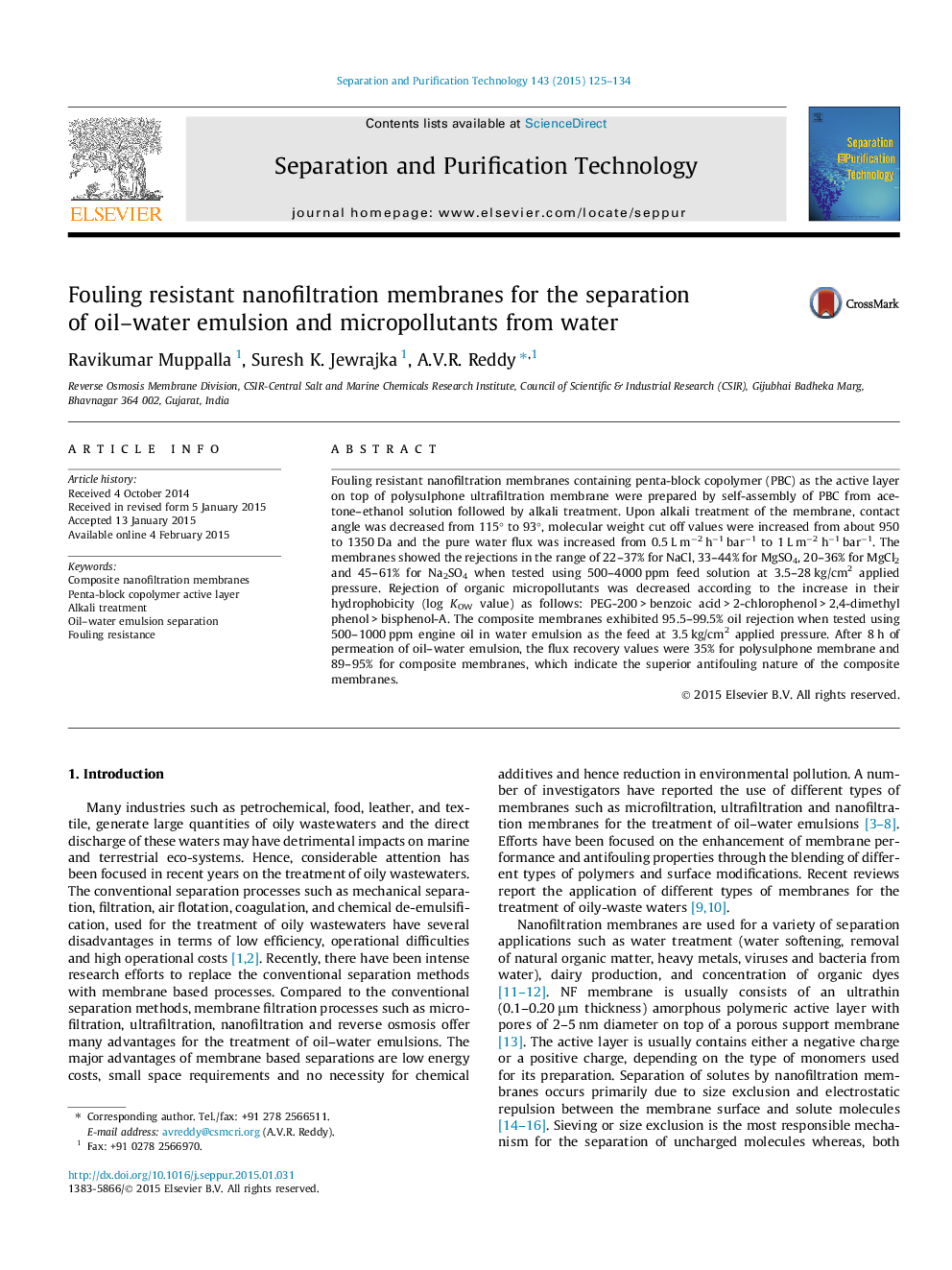| کد مقاله | کد نشریه | سال انتشار | مقاله انگلیسی | نسخه تمام متن |
|---|---|---|---|---|
| 640548 | 1456976 | 2015 | 10 صفحه PDF | دانلود رایگان |
• Composite nanofiltration membranes with penta-block copolymer as active layer.
• Self-assembly of the polymer from acetone–ethanol solution to form active layer.
• Rejection of organic compounds was decreased with the increase in their hydrophobicity.
• Greater than 99% oil rejection was achieved for oil–water emulsion separation.
• For oil–water separation, flux recovery ratio values were 35% for polysulphone and 89–95% for composite membranes.
Fouling resistant nanofiltration membranes containing penta-block copolymer (PBC) as the active layer on top of polysulphone ultrafiltration membrane were prepared by self-assembly of PBC from acetone–ethanol solution followed by alkali treatment. Upon alkali treatment of the membrane, contact angle was decreased from 115° to 93°, molecular weight cut off values were increased from about 950 to 1350 Da and the pure water flux was increased from 0.5 L m−2 h−1 bar−1 to 1 L m−2 h−1 bar−1. The membranes showed the rejections in the range of 22–37% for NaCl, 33–44% for MgSO4, 20–36% for MgCl2 and 45–61% for Na2SO4 when tested using 500–4000 ppm feed solution at 3.5–28 kg/cm2 applied pressure. Rejection of organic micropollutants was decreased according to the increase in their hydrophobicity (log KOW value) as follows: PEG-200 > benzoic acid > 2-chlorophenol > 2,4-dimethyl phenol > bisphenol-A. The composite membranes exhibited 95.5–99.5% oil rejection when tested using 500–1000 ppm engine oil in water emulsion as the feed at 3.5 kg/cm2 applied pressure. After 8 h of permeation of oil–water emulsion, the flux recovery values were 35% for polysulphone membrane and 89–95% for composite membranes, which indicate the superior antifouling nature of the composite membranes.
Journal: Separation and Purification Technology - Volume 143, 25 March 2015, Pages 125–134
